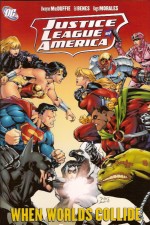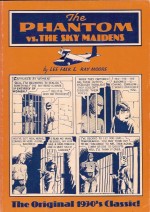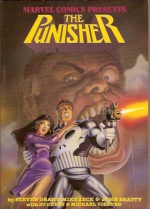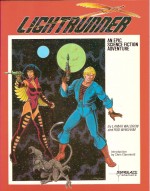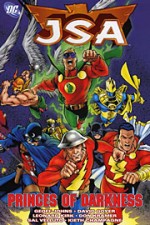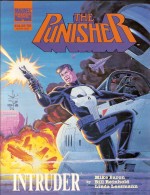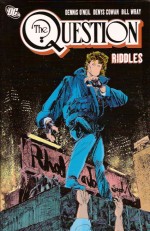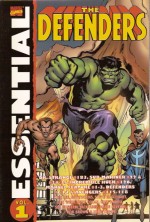
By Roy Thomas, Steve Englehart, Len Wein, Sal Buscema & various (Marvel)
ISBN: 978-0-7851-1547-2
Last of the big star conglomerate super-groups, the Defenders would eventually count amongst its membership almost every hero – and a few villains – in the Marvel Universe. No surprise there then as initially they were composed of the company’s bad-boys: misunderstood, outcast and often actually dangerous to know.
For Marvel, the outsider super-group must have seemed a conceptual inevitability – once they’d finally published it. Apart from Spider-Man and Daredevil all their heroes regularly teamed up in various mob-handed assemblages, and in the wake of the Defenders’ success even more super-teams comprised of pre-existing characters were mustered – such as the Champions, Invaders, New Warriors and so on but never with so many Very Big Guns…
The genesis of the team in fact derived from their status as publicly distrusted “villainsâ€, but before all that later inventive approbation this cheap and cheerful black and white volume (collecting Dr. Strange #183, Sub-Mariner #22, 33-35, Incredible Hulk #126, Marvel Feature #1-3, Avengers #115-118 and Defenders #1-14) re-presents three linked tales that would impact on later issues of the title. Confused yet? You will be…
For kids – of any and all ages – there is a simply primal fascination with brute strength and feeling dangerous, which surely goes some way towards explaining the perennial interest in angry tough guys who break stuff as best exemplified by Prince Namor, the Sub-Mariner and the Incredible Hulk. When you add the mystery and magic of Doctor Strange the recipe for thrills, spills and chills becomes simply irresistible…
The first tale in this volume comes from Dr. Strange #183 (November 1969). In ‘They Walk by Night!’ Roy Thomas, Gene Colan & Tom Palmer introduced a deadly threat in the Undying Ones, an elder race of demons hungry to reconquer the Earth, but as the series unexpectedly ended with that issue the story went nowhere until the February 1970 Sub-Mariner (#22) ‘The Monarch and the Mystic!’ brought the Prince of Atlantis into the mix, as Thomas, Marie Severin & Johnny Craig told a sterling tale of sacrifice in which the Master of the Mystic Arts seemingly died holding the gates of Hell shut with the Undying Ones pent behind them.
The extended saga concluded on an upbeat note with The Incredible Hulk #126 (April 1970) with ‘…Where Stalks the Night-Crawler!’ by Thomas and Herb Trimpe wherein a New England cult dispatched helpless Bruce Banner to the nether realms in an attempt to undo Strange’s sacrifice. Luckily cultist Barbara Norris had last minute second thoughts and her own dire fate freed the mystic, seemingly ending the threat of the Undying Ones forever.
At the end of that issue Strange retired, forsaking magic, although he was back before too long as the fates – and changing reading tastes – called him back to duty. Meanwhile Sub-Mariner had become an early advocate of the ecology movement, and in issues #34-35 of his own title (February and March 1971) he took the next step in the evolution of the Defenders when he recruited Hulk and Silver Surfer to help him destroy an American Nuclear Weather-Control station.
In ‘Titans Three’ and the concluding ‘Confrontation’ (by Thomas, Sal Buscema & Jim Mooney) the always misunderstood trio battled a despotic dictator’s forces, the US Army and the Mighty Avengers to prevent the malfunctioning station from accidentally vaporising half the planet…
With that debacle smoothed over life resumed its usual frenetic pace for the Hulk and Namor until giant sized try-out comic Marvel Feature #1 (December 1971) presented ‘The Day of the Defenders!’ as a mysteriously returned Dr. Strange recruited the Avenging Son and the Jade Giant to help him stop the deathbed doom of crazed super-mind Yandroth.
Determined to not go gently into the dark the Scientist Supreme had built an Omegatron weapon programmed to obliterate the Earth as soon as Yandroth’s heart stopped beating and only the brute strength of the misunderstood misanthropes could possibly stop it…
Naturally the fiend hadn’t told the whole truth but the day was saved – or at least postponed – in a canny classic from Thomas, Ross Andru and Bill Everett. That comic also revealed how Strange regained his mojo in ‘The Return’ by Thomas, Don Heck and Frank Giacoia: a heady ten-page thriller which proved that not all good things come in large packages.
Clearly destined for great things the Defenders returned in Marvel Feature #2 (March 1972) with Sal Buscema replacing Everett as inker for a Halloween treat ‘Nightmare on Bald Mountain!’ Capturing his arch-foe Dr. Strange, extra-dimensional dark lord Dormammu invaded our realm through a portal in Vermont only to be beaten back by the mage’s surly sometimes comrades, whilst in #3 (June 1972) Thomas, Andru and Everett reunited to revive an old Lee/Kirby “furry underpants†monster in ‘A Titan Walks Among Us!’
Xemnu the Titan was an alien super-telepath who wanted to repopulate his desolate homeworld by stealing America’s children until thrashed by the Defenders, but older fans recognised him as the cover-hogging star of Journey into Mystery #62 (November 1960) where he acted as a road-test for a later Marvel star in a short tale entitled ‘I Was a Slave of the Living Hulk!‘
An assured hit now The Defenders leapt swiftly into their own title (cover-dated August 1972), to begin a bold and offbeat run of reluctant adventures scripted by super-team wunderkind Steve Englehart. As a group of eclectic associates occasionally called together to save the world (albeit on a miraculously monotonous monthly basis) they were billed as a “non-team†– whatever that is – but that didn’t affect the quality of their super-heroic shenanigans.
With Sal Buscema as regular penciller an epic adventure ensued with ‘I Slay by the Stars!’ (inked by Giacoia) as sorcerer Necrodamus attempted to sacrifice Namor and free The Undying Ones, a mission that led to conflict with an old ally in ‘The Secret of the Silver Surfer!’ (inked by John Verpoorten) and the concluding, Jim Mooney inked ‘Four Against the Gods!’ as the Defenders took the war to the dimensional dungeon of the Undying Ones and rescued the long imprisoned and now totally insane Barbara Norris.
Clearly a fan of large casts and extended epics Englehart added a fighting female to the non-team with ‘The New Defender!’ (inks by new regular Frank McLaughlin) as the Asgardians Enchantress and Executioner embroiled the anti-heroes in their long-running love-spat, bringing the Black Knight briefly into the mix, and turning Barbara into the latest incarnation of Feminist Fury (these were far less enlightened days) The Valkyrie.
Issue #5 began a long running plot thread that would have major repercussions for the Marvel Universe. The denouement of the previous tale had left the Black Knight an ensorcelled, immobile stone statue, and as Strange and Co. searched for a cure the long defused Omegatron resumed its countdown to global annihilation in ‘World Without End?’
The Surfer “rejoined†in #6’s ‘The Dreams of Death!’ as new lightweight magic menace Cyrus Black attacked, and, after a spiffy pin-up, issue #7 saw  Len Wein co-script ‘War Below the Waves!’ (inked by Frank Bolle) as tempestuous ex-Avenger Hawkeye climbed aboard to help defeat the undersea threat of Attuma and the soviet renegade Red Ghost; a bombastic battle-tale concluded in ‘…If Atlantis Should Fall!’
Since issue #4 Englehart had been putting players in place for a hugely ambitious cross-over experiment: one that would turn the comics industry on its head, and in a little prologue taken from the end of Avengers #115 he finally set the ball rolling here. Drawn by Bob Brown and Mike Esposito, ‘Alliance Most Foul!’ saw Dormammu and the Asgardian god of Evil Loki unite to search for an ultimate weapon that would give them final victory against their foes. They would trick the Defenders into securing the six component parts by “revealing†that the reconstructed Evil Eye could restore the petrified Black Knight, a plan that began at the end of Defenders #8…
The first chapter in ‘The Avengers/Defenders Clash’ was ‘Deception!’ as a message from the spirit of the Black Knight was intercepted by the twin gods of evil, leading directly to ‘Betrayal!’ wherein the Avengers, hunting for their missing comrade, “discover†that their oldest enemies Hulk and Sub-Mariner may have turned the Black Knight to stone. This and the third chapter ‘Silver Surfer Vs. the Vision and the Scarlet Witch’ comprise the contents of Avengers #116, illustrated by Brown & Esposito, wherein the rival teams split up: one to gather the scattered sections of the Eye and the other to stop them at all costs…
Defenders #9 (Buscema & McLaughlin) began with the tense recap ‘Divide …and Conquer’ before ‘The Invincible Iron Man Vs. Hawkeye the Archer’ and ‘Dr. Strange Vs. the Black Panther and Mantis’ shed more suspicion and doubt on the mystical villain’s subtle master-plan. Avengers #117 ‘Holocaust’, ‘Swordsman Vs. the Valkyrie’ and the turning point ‘Captain America Vs. Sub-Mariner’ by Brown and Esposito, led to the penultimate clash in Defenders #10 (Buscema & Bolle) ‘Breakthrough! The Incredible Hulk Vs. Thor’ and the inevitable joining together of the warring camps in ‘United We Stand!’, but sadly too late as Dormammu seized the reconstructed Evil Eye using its power to merge his monstrous realm with ours.
Avengers #118 provided the cathartic climactic conclusion in ‘To the Death’ (Brown, Esposito & Giacoia) as all the heroes of the Marvel Universe battled the demonic invasion whilst the Avengers and Defenders plunged deep into the Dark Dimension itself to end the threat of the evil gods forever (or at least for the moment…).
With the overwhelming cosmic threat over the victorious Defenders attempted to use the Eye to cure their stony comrade only to find that his spirit had found a new home in the 12th century. In #11’s ‘A Dark and Stormy Knight’ (inked by Frank Bolle), the group battled black magic during the Crusades, failed to retrieve the Knight and went their separate ways – as did departing scripter Englehart.
With issue #12 Len Wein assumed the writer’s role and Sal Buscema & Jack Abel illustrated the return of the mind-bending Xemnu in ‘The Titan Strikes Back!’ as the pared down cast of Strange, Valkyrie and the Hulk began a run of slightly more traditional fights ‘n’ tights capers.
The first of these and the last storyline in this volume was a Saves-the-World struggle against the villainous Squadron Sinister that began with ‘For Sale: One Planet… Slightly Used!’ (with an early inking job from Klaus Janson) and concluded in the Dan Green embellished ‘And Who Shall Inherit the Earth?’ as the Batman-analogue Nighthawk joined the Defenders to defeat his murderous ex-team-mates and the aquatic alien marauder Nebulon, the Celestial Man.
With the next volume the Defenders would become one of the best and weirdest superhero comics in the business, but to get there you really need to observe this unruly, uncomfortable selection of misfit heroes in their salad days here. So the fact that their widespread and far-reaching origins are still so eminently entertaining is both a relief and delight.
Go on, Enjoy, Pilgrim…
© 1969, 1970, 1971, 1972, 1973, 1974, 2005 Marvel Characters, Inc. All Rights Reserved.
